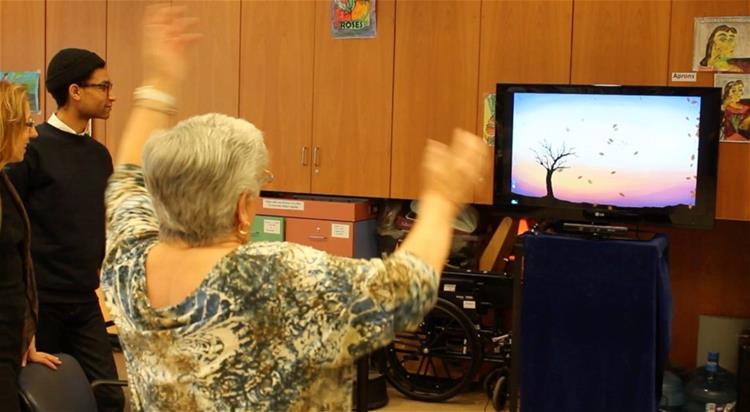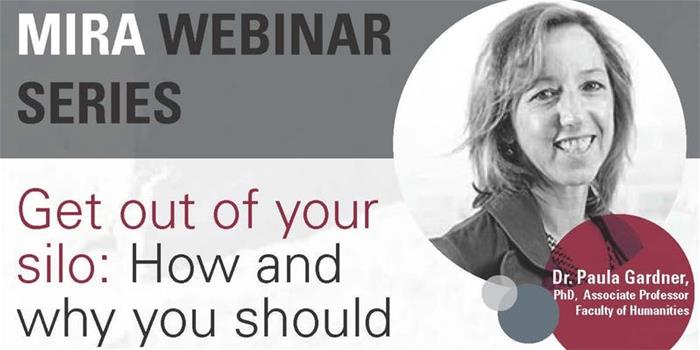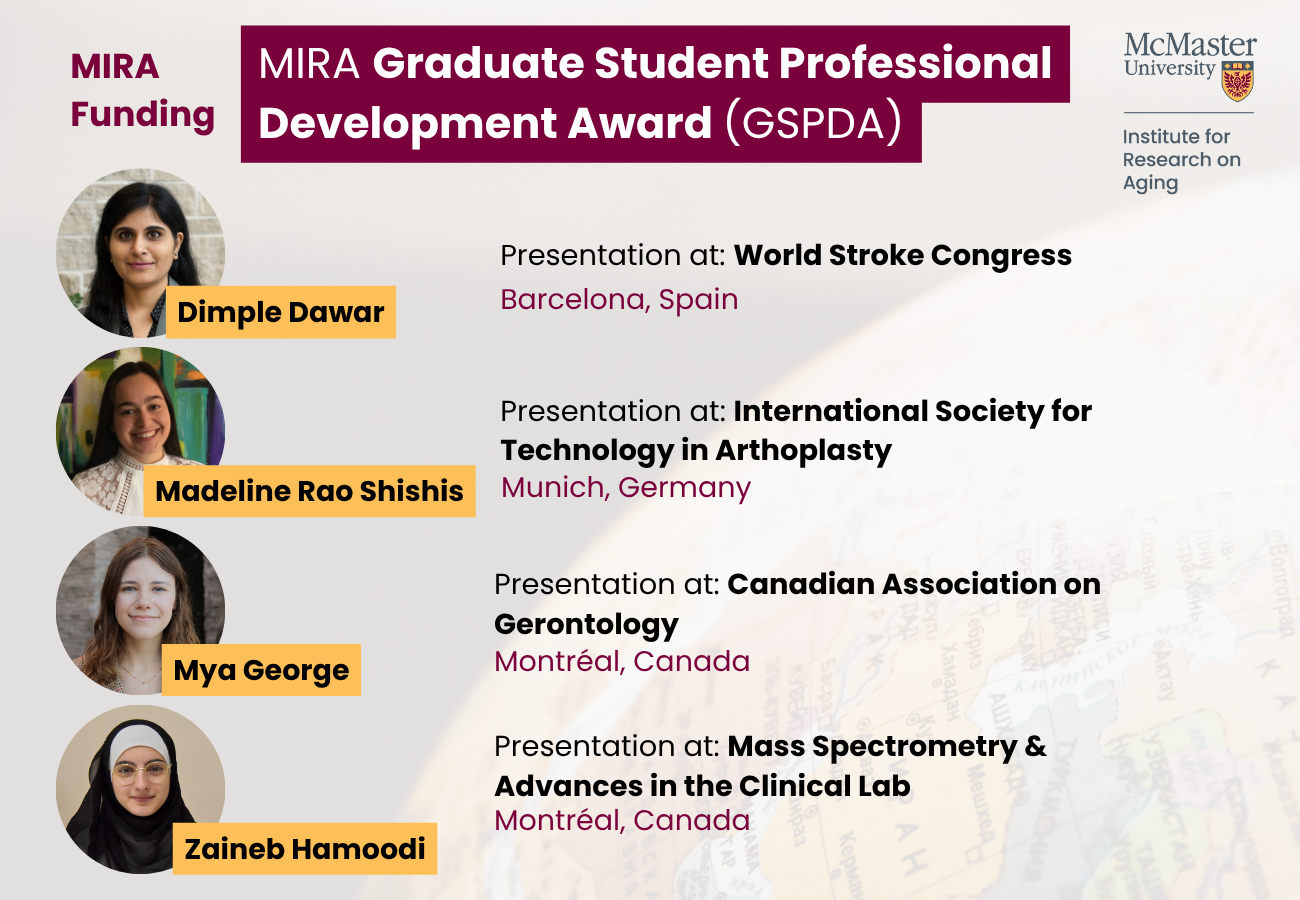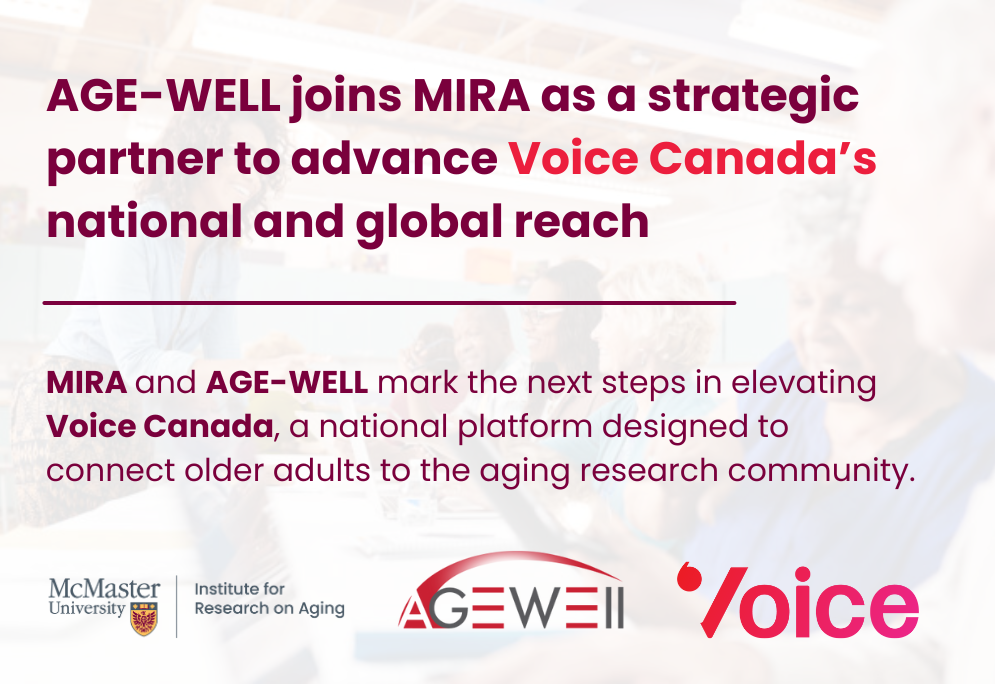 Paula Gardner is an associate professor in the Department of Communication Studies and Multimedia, the Asper Chair in Communications, and the director of the Pulse Lab at McMaster University.
Paula Gardner is an associate professor in the Department of Communication Studies and Multimedia, the Asper Chair in Communications, and the director of the Pulse Lab at McMaster University.
Her research interests include digital culture, biometric technological practices and feminist media studies. ​She leads the ABLE project (Arts Based Therapies Enabling Longevity for Geriatric Outpatients), which, in partnership with the McMaster Institute for Research on Aging (MIRA) and the GERAS Centre, brings together researchers from five McMaster faculties to develop technologies that will enhance the cognitive, physical and emotional health of frail older adults.
Can you tell us how your research relates to aging?
The ABLE project is a digital interface that engages older adults in either rehabilitation exercises or free-flowing dance movement. Older adult participants who are frail and/or who have cognitive impairment can, for example, create a piece of music by waving their hands and arms, paint a digital picture, or play a game and they get real-time feedback in the form of sound or visuals.
It’s meant to feel playful and interactive. The ABLE system has a low barrier to entry, requiring almost no learning, is very inexpensive and is easy to set up in any kind of residential situation. It’s meant to encourage engagement, either with ​the participant and the machine or with the participant and other participants. It improves mobility, access to social communities, and engagement, which enhances mood, and there are physiological benefits as well.
How does the ABLE project work?
It’s similar to what people might have associated years ago with Wii, except in this case you’re interacting with others in the space and not just the technology and the television. It allows older adults to interact with other older adults, family, friends or caregivers.
We did some field testing in care facilities and we found that the subjects were most animated and engaged when they’re playing with each other. We’re trying to encourage peer-to-peer movement and intergenerational engagement so that grandparents and children can have something to do together that’s playful and therapeutic in these care environments.
What inspired you to focus your research on our aging population?
I grew up with a lot of respect for older adults. I had the pleasure of interacting with many grandmothers, great aunts and my great grandmother. That interaction was really formative to how I understand myself in the world today, as well as my responsibility in this world. There is a deep pleasure ​one can get ​when engaging closely with your family, including the older adults who are often marginalized or infantalized. The older adults in my family were the center and the anchors. As a result, I get a lot of pleasure from working with that community.
“MIRA doesn’t just accommodate interdisciplinary research, they cultivate it.”​
 Can gaming tech improve the health of older and frail adults?
Can gaming tech improve the health of older and frail adults?
Has ​joining MIRA enhanced your passion for working with older populations?
I had been working as part of an interdisciplinary team at Baycrest Hospital when I came to McMaster four years ago. So I was looking ​for a sector at Mac that could accommodate similar interdisciplinary research in health and aging.
MIRA doesn’t just accommodate interdisciplinary research, they cultivate it. They’re really leading the conversation on the benefits of interdisciplinary research, and how to create transdisciplinary methods, which I think is something very few researchers do well.
With an interdisciplinary approach, you try to find a common language across your methods, common objectives and goals. But a transdisciplinary method is when you combine all of your assumptions, objectives and desired outcomes to create a new method that integrates all of your disciplinary practices together. That’s a really tall order. For most of us, we’re simply not trained to do that.
How do you ensure interventions like ABLE will be applicable in the real world?
We’re not just inventing things that we think are fun or encouraging, but we’re actually designing and testing these iterations ​with older adults at home to see what’s ​pleasurable to them. Right now we’re testing ABLE in frail individuals who have prescriptions for physical therapy (in home ​environments and hospitals) and we’re writing ​grant proposals to test this in private long-term supportive care environments with people with cognitive deficits.
The benefits to care environments would be that, because the machine is driving the experience, it frees up recreational staff who might not be able to supervise this type of therapy all the time.
People often think of aging research from a health sciences perspective. Can you highlight some of the links between humanities and aging?
I think what Humanities brings to the conversation is adapting user centered and user interaction design so that it’s focused on the users’ interests in the research process itself: Why are participants doing research with us? What are they getting out of the research experience? How do they define health for themselves? What do they want from enhanced mobility?
Sometimes researchers go into studies thinking tha​t, say, there is a problem with balance, which ​may be the case, but when you take the participant into consideration, their biggest problem might be that they’re not independent enough to use the toilet or to walk to the room where people are playing the piano. Their goals may be completely different from the researcher goals.
Is interdisciplinary research necessary? Why is it important to work outside of your silo?
What we achieve by blending our histories and methodologies is more than the sum total. You get innovation when you start ​testing your disciplinary habits, your methods and your assumptions about the populations that you’re working with. Once you reflect on and test those with your multidisciplinary team you recognize other interests, assumptions, problem frames, and testing approaches. In doing so, you necessarily must investigate and assess these other approaches and challenge your own ways of doing things.
This kind of critical reflection and method interrogation is not a small step forward; it’s a crucial step forward. Interdisciplinary research requires us to combine best practices across disciplines to create agreed upon methods, where the whole team recognizes the benefits and deficits of the chosen method. It is the route to crafting a transdisciplinary method that can revolutionize how we conduct research by merging our disciplinary methods.
Different fields and different disciplines ask, define and approach questions in very different ways. If you’re staying in your own discipline, you’re never going to achieve that same kind of rigorous interrogation and method design.
“What we achieve by blending our histories and methodologies is more than the sum total.”
Why are researchers sometimes resistant to interdisciplinary methods?
A lot of times people see interdisciplinarity as an encumbrance because it slows you down as a researcher, and it will slow you down. It takes a lot of emotional labour; it takes extra time and ​very often that time ​spent can’t be quantified as an outcome on your CV, but it’s worth it.
Your methods become improved because you’re creating innovative methods that aren’t possible if you stay in a disciplinary practice. I do hear administrators discussing ​procedures to reward the extra time and labour that comes with this kind of collaboration, so I am ​hopeful that this kind of work is going to be better supported and rewarded at the university level in the future.
Where do you hope to take your research in aging?
I’m a part of a number of cross-Faculty teams at McMaster ​who have ​acquired funding, so our research is progressing. In the case of the ABLE project, we’re hoping to eventually make the interface available commercially so that it can be used by hospitals, care facilities and long-term care homes, and by private individuals in their homes.
I see an opportunity to attract more post-docs and graduate students who are interested in doing humanities-based work on aging in interdisciplinary teams so that we can continue to grow and diversify this research community at McMaster. We really need more students in the humanities to recognize how their skills fit into these interdisciplinary teams.
Do you have an older adult hero?
Mary Jane (MJ) Smith was a feminist social justice advocate and member of my extended family who founded an organization called Unity House in Troy, New York. She worked with communities living in poverty to build housing for people with mental illness and to put in place centres for families in crisis. All of these programs were designed as well with attention to the needs and realities of older adults. She was compassionate, loving, bright, confrontational, and a fierce advocate for social justice. She is one of my role models and I continue to do this work ​to celebrate her life and to follow in her legacy.
Learn more about the ABLE project: ABLE: Arts Based therapies to encourage Longevity in Elderly participants
MIRA SMRTS Webinar | Get out or your silo: How and why you should
Join us on July 30 for a webinar presented by Paula Gardner. During this webinar, Paula will share her own approaches to interdisciplinary research, strategies for success, as well as some of the challenges of working with people outside of your discipline — and how to overcome them.
Host: The McMaster Institute for Research on Aging
Date: Tuesday, July 30, 2019
Time: 1 – 2 p.m.
For more information and to register, click here.


